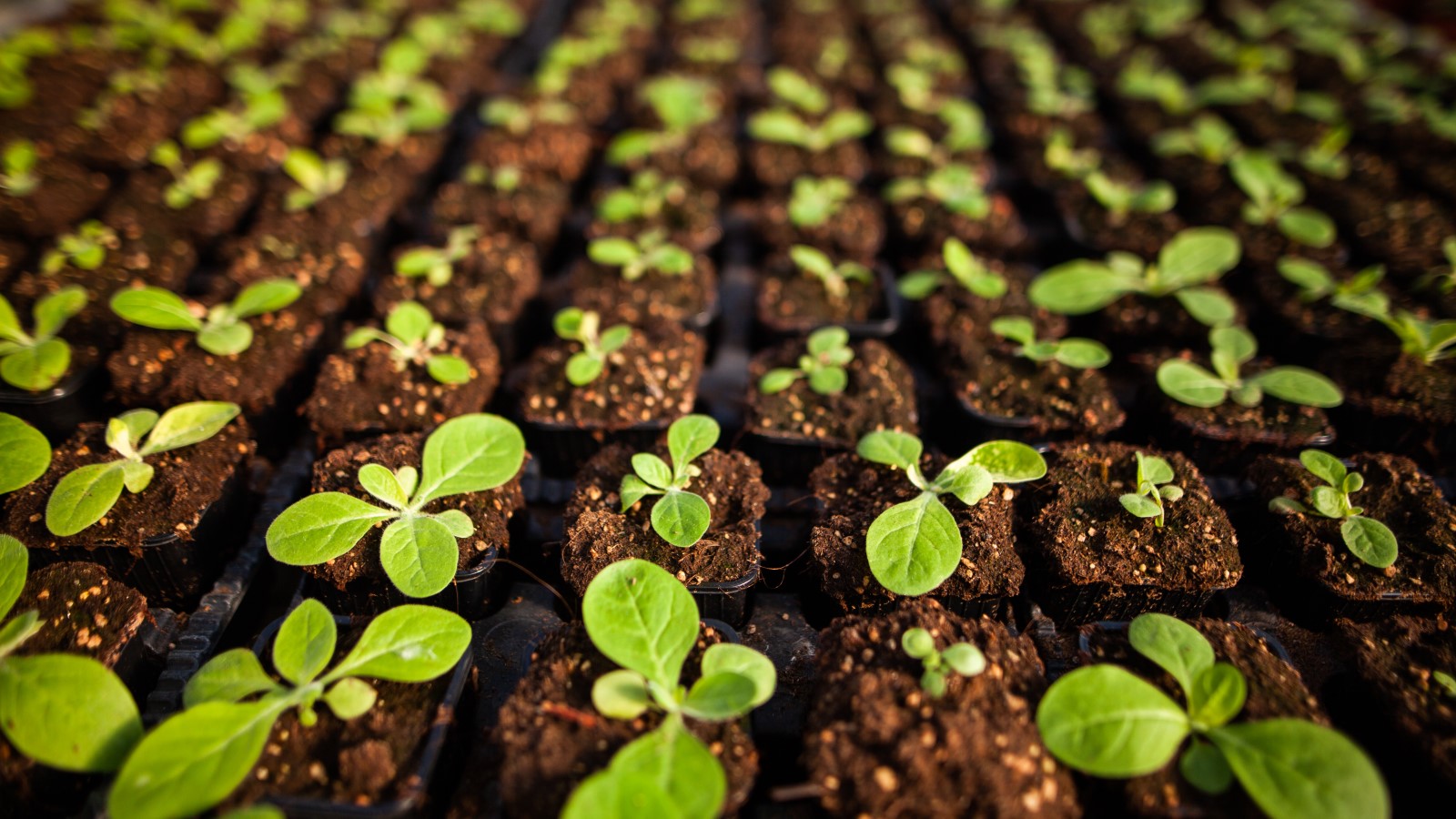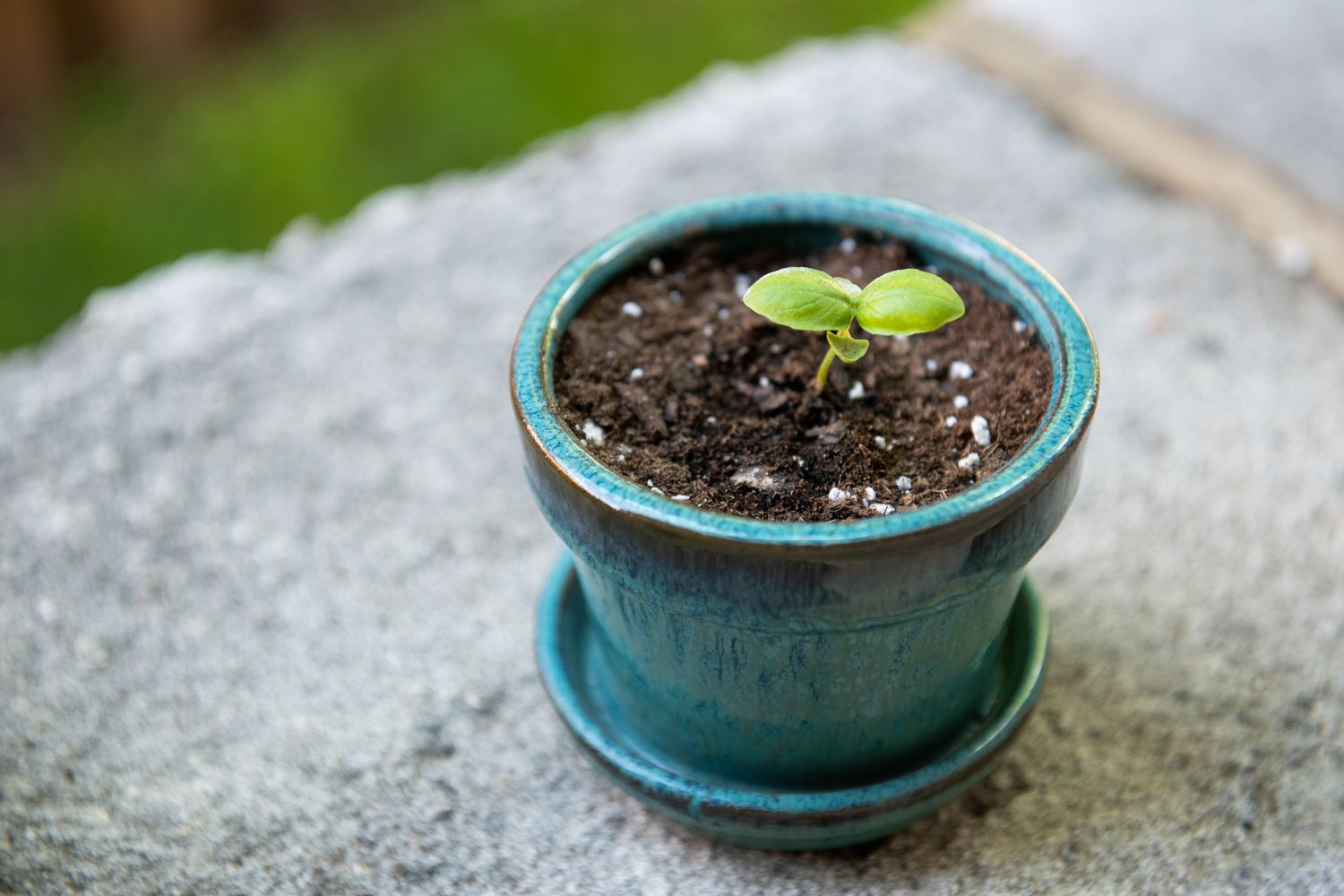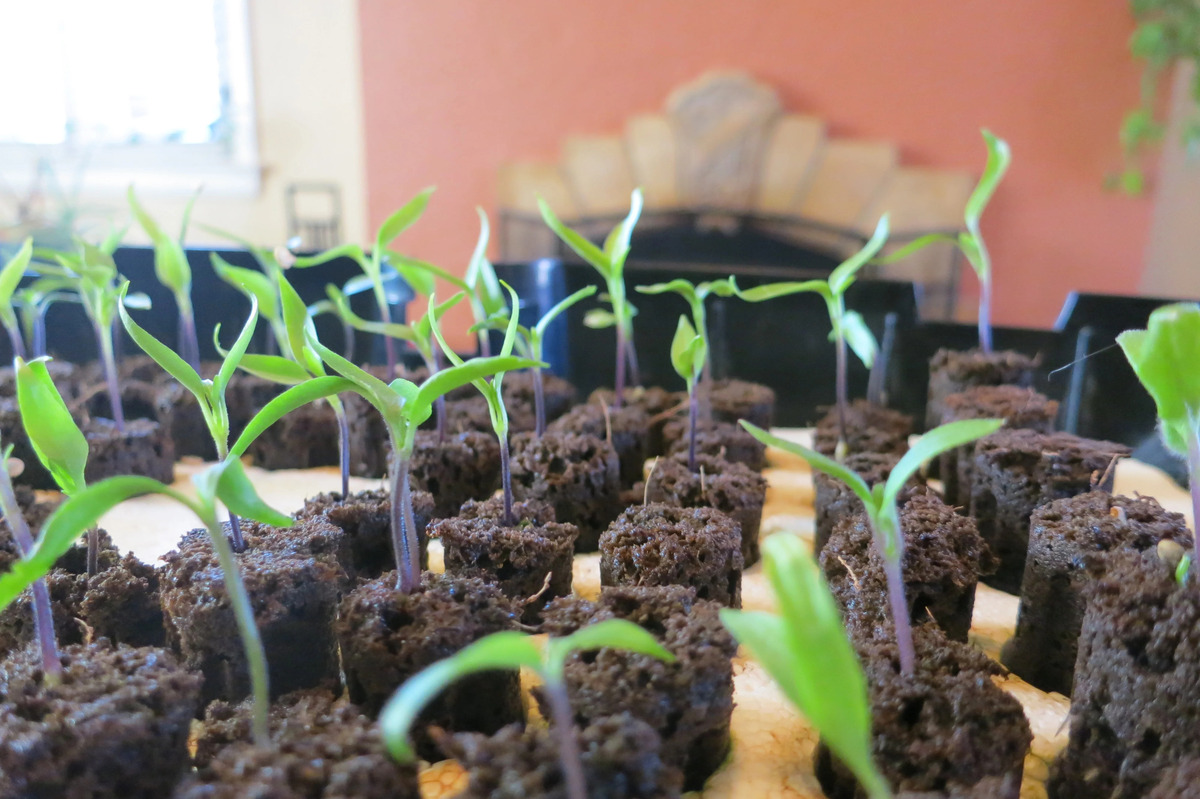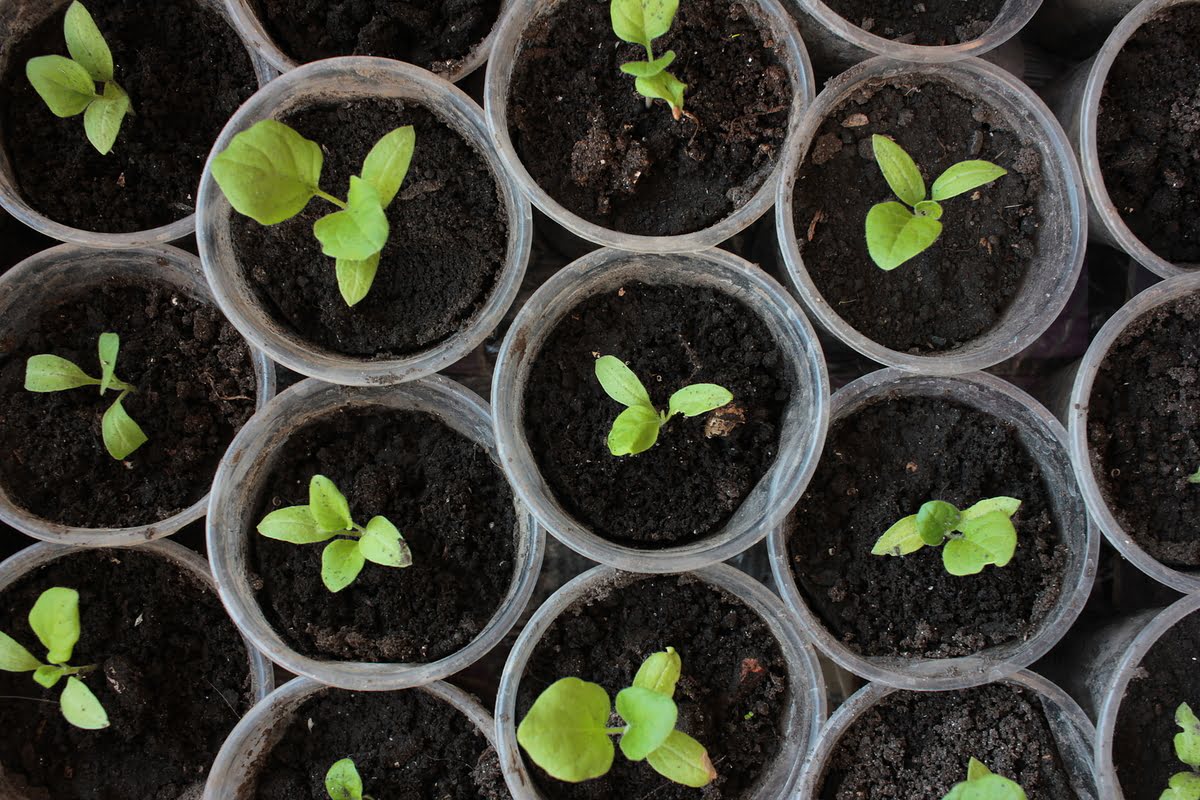Home>Gardening Techniques>Plant Care>When To Move Seedlings To A Bigger Pot


Plant Care
When To Move Seedlings To A Bigger Pot
Modified: January 22, 2024
Learn when and how to move your seedlings to a bigger pot for optimal plant care. Follow these essential tips for successful transplanting.
(Many of the links in this article redirect to a specific reviewed product. Your purchase of these products through affiliate links helps to generate commission for Chicagolandgardening.com, at no extra cost. Learn more)
Table of Contents
Introduction
When to Move Seedlings to a Bigger Pot
As a plant enthusiast, witnessing the growth of seedlings is a rewarding experience. From the tender emergence of the first tiny leaves to the development of a robust root system, nurturing seedlings is a labor of love. However, as these delicate plants flourish, they will inevitably outgrow their initial containers, requiring a transition to larger pots to continue thriving. Understanding the optimal time to move seedlings to bigger pots is crucial for their well-being and long-term development.
Transplanting seedlings to larger containers provides them with the space and nutrients necessary for sustained growth. It allows their roots to expand, promoting stronger and healthier plants. However, timing is essential, as moving them too early can hinder their growth, while delaying the transfer can lead to root-bound conditions and stunted development.
In this comprehensive guide, we will explore the signs indicating that it’s time to repot seedlings, the importance of selecting the right pot size, the steps involved in moving seedlings to a bigger pot, and valuable tips for ensuring a successful transplanting process. By understanding these key aspects, you will be equipped to support the thriving growth of your seedlings and witness the beauty of their continued flourishing.
Signs it’s Time to Repot Seedlings
Recognizing the signs indicating that seedlings require repotting is essential for maintaining their health and vigor. While seedlings may initially thrive in their small, confined spaces, certain indicators suggest that they have outgrown their current pots and need to be relocated to larger containers.
- Root Crowding: One of the most evident signs that seedlings need repotting is the presence of visible roots emerging from the drainage holes at the bottom of the pot or encircling the soil’s surface. This indicates that the current container can no longer accommodate the expanding root system, hindering the plant’s further development.
- Stagnant Growth: If you notice that your seedlings’ growth has slowed significantly, despite adequate watering and sunlight, it may be a sign that they are running out of space and nutrients in their current pots. This stagnation suggests the need for a larger pot to provide the necessary resources for continued growth.
- Drying Out Quickly: When the soil in the pot dries out rapidly, requiring more frequent watering than usual, it could indicate that the root system has become too dense, leaving insufficient space for water retention. This can stress the seedlings and impede their development.
- Yellowing or Wilting Leaves: Seedlings that exhibit yellowing or wilting leaves, despite receiving adequate water and sunlight, may be signaling their distress due to cramped conditions. Repotting them into larger containers can alleviate this stress and revitalize their growth.
By remaining attentive to these signs and promptly addressing the need for repotting, you can ensure that your seedlings continue to thrive and flourish in their new, spacious environment.
Choosing the Right Size Pot
When it comes to selecting the appropriate pot size for your seedlings, striking the right balance is crucial. The chosen pot should provide ample space for the seedlings’ roots to expand and access essential nutrients, without being excessively large and leading to waterlogging or nutrient imbalance. Here are key considerations for choosing the right size pot:
- Room for Growth: Opt for a pot that offers sufficient room for the seedlings’ roots to spread and grow. A general guideline is to choose a pot that is 1-2 inches larger in diameter than the current container. This allows for healthy root development without overwhelming the plant with an excessively spacious environment.
- Depth: Consider the depth of the pot, especially for plants with deep root systems. Deeper pots provide ample space for the roots to establish themselves and access nutrients from the lower layers of the soil, promoting robust and vigorous growth.
- Drainage: Ensure that the chosen pot has adequate drainage holes to prevent waterlogging, which can lead to root rot and other detrimental conditions. Proper drainage is essential for maintaining the overall health of the seedlings and preventing water-related stress.
- Material: Select a pot made from breathable and porous materials, such as terracotta or fabric, to facilitate air circulation to the roots and prevent moisture buildup. These materials also help regulate the temperature of the soil, creating an optimal environment for root development.
By carefully considering these factors and selecting pots that align with the specific needs of your seedlings, you can provide them with a supportive and nurturing environment for sustained growth and vitality.
Steps for Moving Seedlings to a Bigger Pot
Transferring seedlings to larger pots is a delicate process that requires attention to detail and gentle handling to minimize stress on the plants. By following these essential steps, you can ensure a smooth and successful transition for your seedlings:
- Prepare the New Pot: Fill the new, larger pot with a high-quality potting mix, leaving sufficient space at the top for the seedlings to be comfortably positioned without overcrowding. Ensure that the potting mix is well-draining and nutrient-rich to support the seedlings’ growth.
- Water the Seedlings: Before transplanting, water the seedlings in their current pots to moisten the soil. This facilitates easier removal and minimizes root disturbance during the transfer process.
- Gently Remove the Seedlings: Carefully loosen the soil around the seedlings in their current pots, avoiding excessive disturbance to the roots. Gently lift the seedlings from the soil, holding them by the leaves to prevent damage to the delicate stems and roots.
- Position in the New Pot: Create a small hole in the center of the potting mix in the larger pot and carefully place each seedling into its new home. Position the seedlings at the same depth as they were in their previous pots, ensuring that the soil level aligns with the base of the stems.
- Fill in the Surrounding Soil: Gently fill in the gaps around the seedlings with additional potting mix, ensuring that the roots are adequately covered and supported. Lightly press the soil to secure the seedlings in place while avoiding compacting the mix excessively.
- Water and Settle: Water the newly potted seedlings gently to help settle the soil and provide initial hydration. Avoid overwatering, as this can lead to waterlogged conditions. Place the pots in a suitable location with adequate sunlight and optimal growing conditions for the specific plant species.
By following these steps with care and precision, you can facilitate a seamless transition for your seedlings into their new, spacious pots, setting the stage for continued growth and vitality in their expanded environment.
Tips for Successful Transplanting
Transplanting seedlings to larger pots is a critical phase in their growth journey, and employing the following tips can greatly enhance the success of this process:
- Timing is Key: Aim to transplant seedlings in the morning or early evening to minimize stress on the plants during the cooler parts of the day. This allows them to acclimate to their new environment before facing the full intensity of sunlight.
- Handle with Care: When removing the seedlings from their current pots, handle them gently by the leaves to avoid damaging the delicate stems and roots. Minimizing root disturbance is crucial for the seedlings’ continued health and growth.
- Provide Adequate Watering: Ensure that the seedlings are well-watered before and after transplanting to support their transition. However, avoid overwatering, as excessively wet soil can lead to root rot and other complications. Maintain a balance to promote healthy root establishment.
- Monitor for Transplant Shock: After transplanting, monitor the seedlings closely for any signs of transplant shock, such as wilting or yellowing leaves. Providing a nurturing environment with appropriate moisture and light can aid in minimizing the impact of transplant shock.
- Gradual Sun Exposure: If possible, gradually introduce the newly potted seedlings to direct sunlight to prevent sunburn and stress. This can be achieved by initially placing them in a partially shaded area and gradually increasing their exposure to sunlight over a few days.
- Support with Nutrients: Consider supplementing the seedlings with a diluted, balanced fertilizer after transplanting to provide them with essential nutrients for vigorous growth. However, exercise caution to avoid over-fertilization, which can harm the delicate root systems.
By incorporating these tips into your transplanting process, you can optimize the conditions for your seedlings’ successful adaptation to their new pots, setting the stage for robust growth and resilience in their expanded environment.
Conclusion
Successfully transitioning seedlings to larger pots is a pivotal aspect of nurturing their growth and ensuring their long-term vitality. By recognizing the signs indicating the need for repotting, selecting the appropriate pot size, and following the essential steps for transplanting, you can provide your seedlings with an optimal environment for sustained development.
Understanding the significance of repotting and its impact on the health of seedlings empowers plant enthusiasts to actively support the flourishing growth of their green companions. By remaining attentive to the needs of the seedlings and implementing best practices for transplanting, you can foster a thriving and resilient garden filled with vibrant, healthy plants.
As you embark on the journey of nurturing your seedlings and guiding them through their growth stages, remember to approach the process with patience, care, and a deep appreciation for the beauty of nature’s unfolding wonders. Each step taken to ensure the well-being of your seedlings contributes to the creation of a flourishing and bountiful garden, enriching your surroundings with the vibrant energy of thriving plant life.
Embrace the joy of witnessing your seedlings thrive in their new, spacious pots, and take pride in the role you play in nurturing the natural splendor that graces your living spaces. With a blend of knowledge, attentiveness, and a touch of tender care, you can embark on a fulfilling journey of supporting the growth and vitality of your beloved seedlings, sowing the seeds for a future filled with lush greenery and natural abundance.










